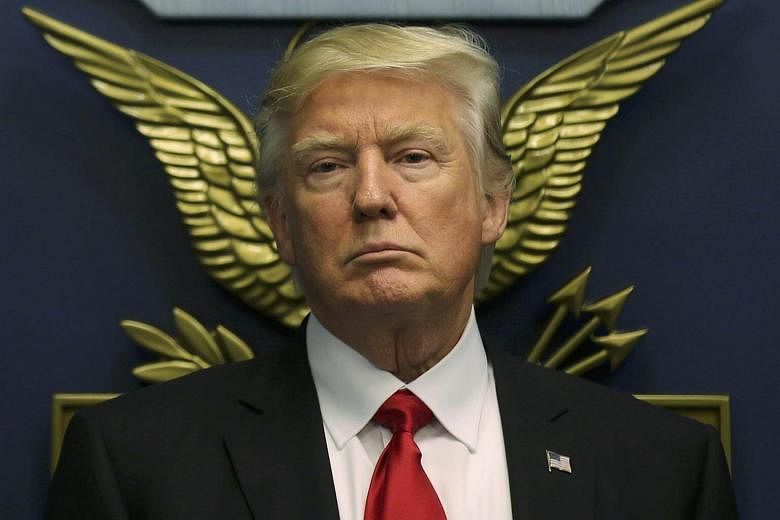WASHINGTON • The White House is drafting a presidential directive that calls on Defence Secretary James Mattis to devise plans to more aggressively strike the Islamic State in Iraq and Syria (ISIS), which could include US artillery on the ground in Syria and army attack helicopters to support an assault on the group's capital, Raqqa, officials said.
US President Donald Trump, who was scheduled to make his first visit to the Pentagon yesterday as commander-in-chief, will demand that the new options be presented to him within 30 days, the officials said.
During the presidential campaign, Mr Trump had repeatedly said that he had a secret plan to defeat ISIS, but he also said he would give his commanders a month to come up with other options.
The directive to identify new ways to hasten the demise of ISIS has been widely anticipated by military commanders, who have begun drafting classified options to increase the pressure on the militant group, especially in Raqqa and Mosul, its stronghold in Iraq.
The man charged with overseeing this re-examination of US defence is Mr Mattis, a retired Marine Corps four-star general who commanded US forces in the Middle East, and will be working in partnership with General Joseph Dunford Jr, chairman of the Joint Chiefs of Staff. Mr Mattis used to be Gen Dunford's commanding officer in the Marines.
Mr Mattis will face multiple challenges. As an emissary to longstanding allies in Asia and Europe, he has staked out a position as the administration's reassurer-in-chief.
One of his first moves as defence secretary was to phone the Nato secretary-general to assure him that he strongly supported the alliance, which Mr Trump has criticised as "obsolete".
Mr Mattis will fly to Asia next week to allay concerns in Japan and South Korea that the United States might abandon longstanding commitments to their security.
A week after that, he is expected to make another reassurance trip, this one to Europe, to meet his counterparts at Nato in Brussels, and then at a security conference in Munich.
But crafting a plan to intensify the fight against ISIS is the most urgent task facing Mr Mattis.
When President Barack Obama left office, half of Mosul remained in the hands of the militants. Tens of thousands of US-backed Syrian Kurdish and Arab fighters were closing in on Raqqa, but there was no agreement on which force should seize the capital itself.
The potential options include expanding the use of US special operations forces, raising the troop ceilings on US forces in Iraq and Syria, and having the White House delegate more authority to the Pentagon and its commanders in the field, in order to speed up decision- making.
The Pentagon also faces a difficult decision on whether to risk alienating Turkey by arming the Syrian Kurds for the Raqqa battle, or whether to cobble together a more diverse force that could include Turkish troops, Turkish-backed opposition groups and perhaps even elements of the US Army's 82nd Airborne Division.
Turkey considers the Syrian Kurds terrorists, and has been trying to forge closer ties with the Trump administration.
NYTIMES

